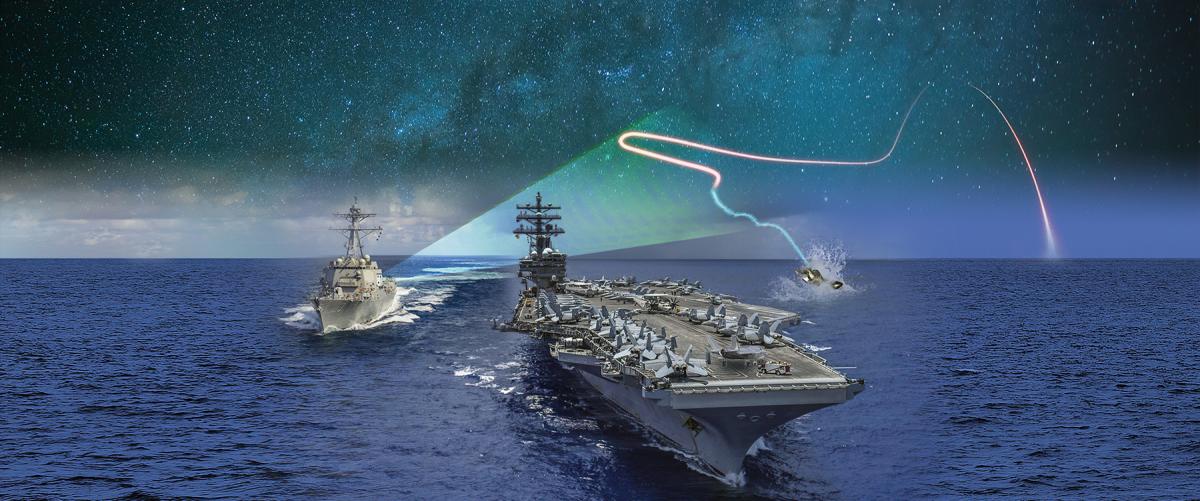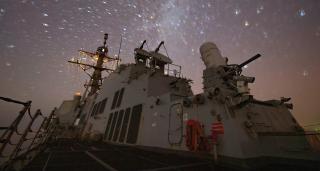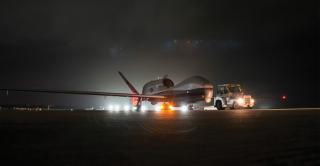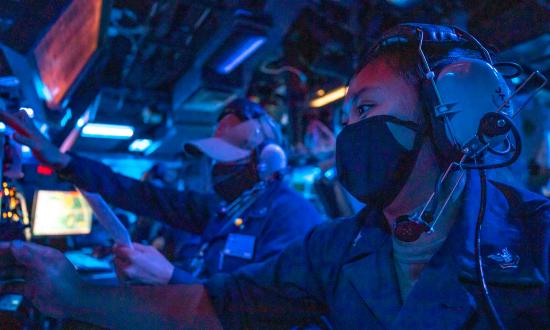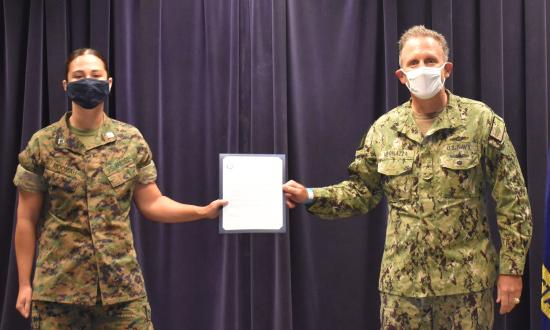There is no bigger undertaking in information warfare (IW) than the Department of Defense’s (DoD’s) Joint All-Domain Command and Control (JADC2) initiative. JADC2 is both the present and future of the communication and information battlespace, providing “an approach for developing the warfighting capability to sense, make sense, and act at all levels and phases of war, across all domains, and with partners, to deliver information advantage at the speed of relevance.”1 Underneath this umbrella of capabilities sits a complex web of physical networks, data sets, artificial intelligence tools, electronic warfare capabilities, and cyber weapons and defenses. These platforms and skills are part of highly selective training pipelines for the most capable personnel and are distributed worldwide to meet the needs of commanders in every theater.
Each military service is responsible for contributing to the overall DoD effort, merging capabilities, sharing best practices, integrating technologies, and increasing the lethality of the force. To do this, the Army set up Project Convergence; the Air Force created its Advanced Battle Management System; and the Navy established Project Overmatch, which Chief of Naval Operations (CNO) Admiral Michael Gilday identified as his number two priority behind the Columbia-class ballistic missile submarine.2
The CNO directed the Deputy CNO for Information Warfare and Director of Naval Intelligence (OpNav N2N6) to develop and implement Project Overmatch. The information warfare community (IWC) is guided by three tenets that make it the best community to be the Navy lead for JADC2: assured command and control (C2), battlespace awareness, and integrated fires. To develop and implement Project Overmatch, IW professionals begin by defining the Navy’s requirements.
In late October 2022, the Deputy CNO for Information Warfare said the information warfare community was not “mature enough in the learning that we’re doing with our multiple exercises yet to define the problem we want solved.”3 He went on to say that greater flexibility and experimentation will ensure the Navy gets exactly what it needs from Project Overmatch and JADC2.
But for the rank and file, his comments look different: Could the information warfare officers on the N2N6 staff not be trusted to articulate the Navy’s needs for its most important IW program in years? No aircraft would ever be built without consulting naval aviators; no ship would sail without support from surface warfare officers. If the IWC is going to own major initiatives within the IW domain, it must build a robust cadre of officers at all paygrades with fleet experience to help the Navy develop and fund new capabilities, integrate them into the fleet, and sustain them over time. The IWC needs requirements officers.
What Is Required
From cruisers to keyboards, every piece of military equipment at one time had to be identified, purchased or built, and sent to the fleet. Before making any decisions, however, the Navy answered three questions:
• What is our desired effect?
• What do we need to deliver the effect?
• What does it cost?
In each case, answers must be provided by experts before any action can be taken, but these experts do not spring fully formed from the waterfront. Rather, they are created by selecting officers who can combine operational experience with formal training in a variety of legislative, policy, and fiscal processes and then serve in critical jobs on the staffs of senior leaders, including the CNO, Chairman of the Joint Chiefs, and Navy and Defense secretaries. It is through their efforts that the three questions are answered and DoD’s three key acquisition processes are executed in concert:
• The Joint Capabilities Integration and Development System defines what effects must be delivered.
• The Defense Acquisition System (DAS) determines what achieves those effects.
• The planning, programming, budgeting, and execution (PPBE) process provides resources to build, buy, or train whatever and whomever is needed.4
The officers working on each process belong to cadres with their own selection, training, and qualifying processes. The DAS is supported by the acquisition community, whose uniformed officers come largely from restricted line communities (e.g., engineering duty officers) or via signed memoranda for unrestricted line officers to pursue a specialized career path.5 Acquisition professionals serve in a community established by Congress in 1990, hold civilian-equivalent professional certifications, and often have advanced degrees in technical fields.6 The bar to entry into the acquisition community is high, and, once accepted, officers usually remain in it for the rest of their careers.
The PPBE process was established during the Kennedy and Johnson administrations, an outcome of Secretary of Defense Robert McNamara’s insistence on the modernization and industrialization of DoD, and has remained largely unchanged since the 1960s.7 Officers who work in the PPBE system specialize in financial management, which is often a career subspecialty track and has a series of additional qualification designators (AQDs) that occupy an entire chapter in the Manual of Navy Officer Manpower and Personnel Classifications Major Code Structures.8
By contrast, while requirements work has been done in various forms for years, it was not until the National Defense Authorization Act of 2007 that Congress directed DoD to “develop a training program to certify military and civilian personnel . . . with responsibility for generating requirements.”9 From there, then-CNO Admiral John Richardson established the Navy’s requirements management community in 2017. A two-page announcement stated that the requirements management community would build “the foundation for developing the needed cadre of requirements experts. . . to affordably procure the right capabilities at the right time in an increasingly complex warfighting environment.”10 A subspecialty code was created and OpNav billets were set aside for requirements officers. A six-course, locally executed requirements management certification program and subsequent AQD (BYC) were outlined in a 2019 staff memo, which stipulated that a requirements officer “should have a balance of [requirements management] expertise, financial and resource management familiarity, acquisition familiarity, and a solid foundation of leadership and management skills.”
In addition to owning the integration and development process, a requirements officer should understand the DAS and PPBE processes and ultimately “have the ability to clearly articulate capability needs of end users, understand mission context, functional decomposition, and traceability of mission to system performance.”11 Any officer eligible to serve on the OpNav staff can become a requirements officer, enabling all communities to have personnel specializing in requirements management. The Navy benefits by developing more capable requirements officers, resulting in more effective acquisition and resourcing processes. Individual requirements officers benefit from advocating for the elements in their portfolios, which will be reflected in their warfighting community. This virtuous cycle is reflected in the way OpNav has arranged itself and billets its officers.
The Deputy CNO for Warfare Systems (N9), a three-star position, is the primary resource sponsor for most of the Navy’s marquee programs. N9 is organized by warfare area, including Expeditionary Warfare (N95), Surface Warfare (N96), Undersea Warfare (N97), and Air Warfare (N98). Collectively, these offices sponsor platforms such as ships, aircraft, and submarines; their efforts are coordinated by director, Integrated Warfare (N9I).12 Each N9 division is staffed with unrestricted line officers on shore duty following operational tours in their warfare communities, and they use their recent experience to inform resourcing decisions. After their N9 tours, they return to the fleet with a better understanding of how and why the Navy works as it does.
The Navy incentivizes officers to take these positions by addressing them explicitly in promotion selection board precept language at the O-4, O-5, and O-6 levels. In fiscal year 2023, requirements management ranked fourth on a prioritized list of 23 additional requirements identifying officers as best and fully qualified for promotion.13 These tours are identified in unrestricted line career progression briefs, and officers are usually detailed following major career milestones (i.e., department head or command).14 This personnel management strategy has paid dividends: As of November 2022, nearly 60 percent of the Navy’s active-duty holders of the BYC AQD are unrestricted line officers.15
The N2N6 staff recently reorganized, creating a parallel structure to the N9 for the IWC requirements and resourcing. Divisions were roughly aligned to the different information warfare communities—Enterprise Networks and Cybersecurity (N2N6D), Oceanography and Navigation (N2N6E), Tactical Networks and C3 (N2N6N), Crypto-Electronic and Cyber Warfare (N2N6W), and Intelligence (N2N6Q), and several collaborative divisions. These divisions are coordinated and tied together by the Warfighting Integration Division (N2N6I), equivalent in task and rank to the director, Integrated Warfare.16
The responsibilities of and benefits for the ROs assigned to N2N6 are the same as their N9 counterparts, but there are fewer job opportunities available and no set career path to slot upwardly mobile officers into requirements jobs following operational tours. In fact, the IWC has no promotion board precept language even mentioning requirements management and only token language acknowledging certain cyber- and space-qualified officers eligible to earn acquisition AQDs. This lack of a deliberate personnel management strategy has taken a toll.
Simple Changes Will Help
Senior IW leaders must show that requirements management is an important skill for information warfare officers and prioritize RO tours accordingly. Sending upwardly mobile officers to N2N6 directorates to be requirements officers would ensure resourcing decisions made in the Pentagon today support the needs of the future fleet. They can do so immediately by updating convening order language for captain, commander, and lieutenant commander promotion boards to indicate that requirements management is an expertise in high demand in the IWC. This change would increase the visibility of the requirements management community across the IWC and create a path for officers in pursuit of tours that increase their likelihood for promotion.
IW leaders should also add more billets for ROs at N2N6, nesting opportunities for officers of each specialty within their respective staff divisions. Further, leaders should investigate whether some N2N6 RO tours can be credited for milestone duty. Offering even one milestone tour per paygrade for each IWC designator would allow the RO positions in N2N6 to become screened and given to officers who have demonstrated both sustained superior performance and a clear interest in upward progression. For those IW senior leaders serving on the Joint Staff, a greater effort should be made to recruit information warfare officers to serve in the J2F8 (Battlespace Awareness Capabilities) or J8 (Force Structure, Resources, and Assessment) divisions, where they can learn requirements management from the joint perspective.
IWC detailers can help implement these changes and set future leaders up for success by pushing for officers to go from milestone or leadership positions to RO tours at the Pentagon, putting high-performing officers on a similar path to those of unrestricted line communities. Each IWC specialty should insist its detailers acquire and retain this level of understanding about the requirements management community. From there, detailers could give officers with requirements management experience the chance to put their skills to work in high-impact positions such as within the Office of Legislative Affairs or the Navy Department of Budget. And while each specialty identifies the type of graduate education its officers should pursue, IWC detailers can detail officers to programs that satisfy specialty career needs and develop requirements management skills, such as the master of systems analysis degree at the Naval Postgraduate School.
For their part, officers should seek requirements management jobs and do them well. Information warfare officers can push for requirements officer tours following sea duty assignments and should identify potential jobs ahead of conversations with detailers and mentors. Once qualified as a requirements officer, information warfare officers should ensure their AQDs are documented for future promotion and screening boards and detailing opportunities. Officers can also pursue graduate education in conjunction with requirements officer work, as the Naval Postgraduate School offers both the master of systems analysis and a systems analysis certificate online. Finally, identifying oneself as an RO when talking with the detailer can reveal a variety of opportunities both in the Pentagon and worldwide, as every fleet and combatant command has a requirements division.
As information warfare continues to mature as a community responsible for both warfighting and resourcing, its officers must have sufficient opportunity and guidance to lead in those arenas. It must quickly and clearly develop a cadre of requirements officers who can better inform resourcing decisions to drive the community forward. If the IWC cannot compete in today’s budget battles, it will not be as capable as it could be to help the Navy win tomorrow’s wars—the most important requirement of all.
1. U.S. Department of Defense, Summary of the Joint All-Domain Command and Control (JADC2) Strategy, March 2022, 3.
2. Colin Demarest, “U.S. Navy Sharing Project Overmatch Insights with International Allies,” C4ISRNet, 19 October 2022.
3. Mark Pomerleau, “JADC2 Will Benefit from Lack of Requirements, Officials Say,” DefenseScoop, 27 October 2022.
4. Irv Blickstein, John M. Yurchak, Bradley Martin, Jerry M. Sollinger, and Daniel Tremblay, Navy Planning, Programming, Budgeting, and Execution: A Reference Guide for Senior Leaders, Managers, and Action Officers (Santa Monica, CA: The RAND Corporation, 2016), 5–6.
5. U.S. Navy, “Acquisition Officer Quick Reference Guide–DAWIA v5,” 5 September 2022, 1–2.
6. H.R.5211—101st Congress (1989–1990): Defense Acquisition Workforce Improvement Act, 13 July 1990, www.congress.gov/bill/101st-congress/house-bill/5211.
7. Blickstein et al., Navy Planning, Programming, Budgeting, and Execution, 7.
8. Department of the Navy, Manual of Navy Officer Manpower and Personnel Classifications Major Code Structures (NAVPERS 15839I), part D, chapter N, October 2022.
9. H.R.5122—109th Congress (2005-2006): John Warner National Defense Authorization Act for Fiscal Year 2007, Section 801, 17 October 2006, www.congress.gov/bill/109th-congress/house-bill/5122.
10. ADM John M. Richardson, USN, “Establishment of Navy Requirements Management Community and Subspecialty” (NAVADMIN 228–17), 14 September 2017.
11. Department of the Navy, OPNAV Staff Instruction 5200.39: Requirements Management Certification Training and Continuing Training Program, 17 April 2019.
12. Blickstein et al., Navy Planning, Programming, Budgeting, and Execution, 23–24.
13. Secretary of the Navy, “Order Convening the FY-23 Promotion Selection Boards to Consider Officers in the Line on the Active-Duty List of the Navy for Permanent Promotion to the Grade of Lieutenant Commander,” 6 May 2022, 5; Secretary of the Navy, “Order Convening the FY-23 Promotion Selection Boards to Consider Officers in the Line on the Active-Duty List of the Navy for Permanent Promotion to the Grade of Commander,” 11 February 2022, 5; and Secretary of the Navy, “Order Convening the FY-23 Promotion Selection Boards to Consider Officers in the Line on the Active-Duty List of the Navy for Permanent Promotion to the Grade of Captain,” 11 January 2022, 5.
14. U.S. Navy, “FY-23 Active-Duty Line Community Brief,” Navy Personnel Command, 2022.
15. Data retrieved from Fleet Training Management and Planning System (FLTMPS), 30 November 2022.
16. U.S. Navy, “OPNAV N2N6 Realignment Fact Sheet,” 4 February 2022.



